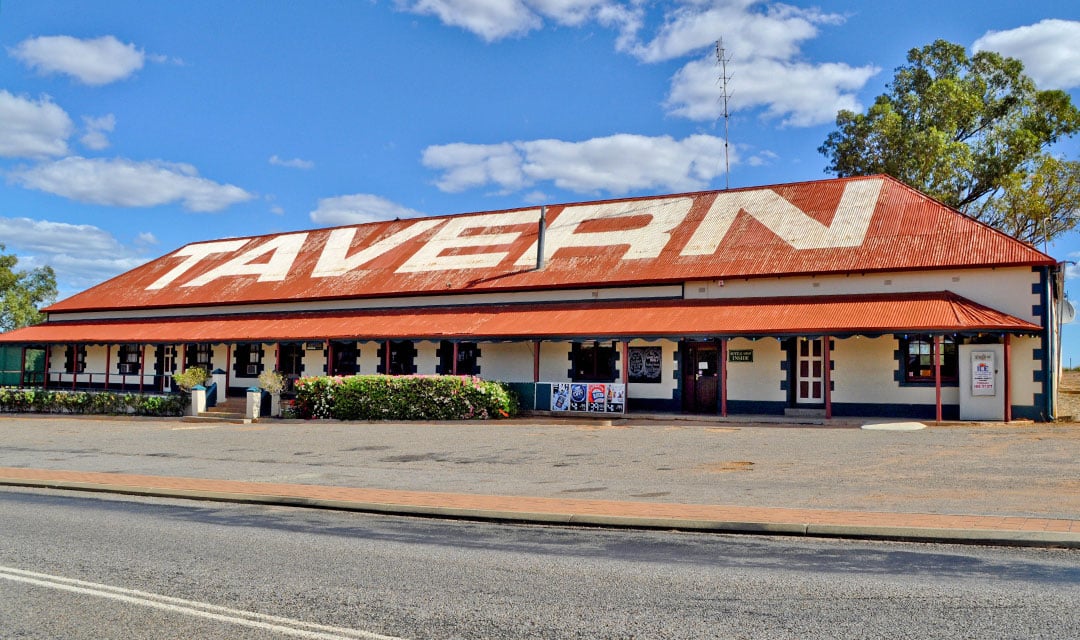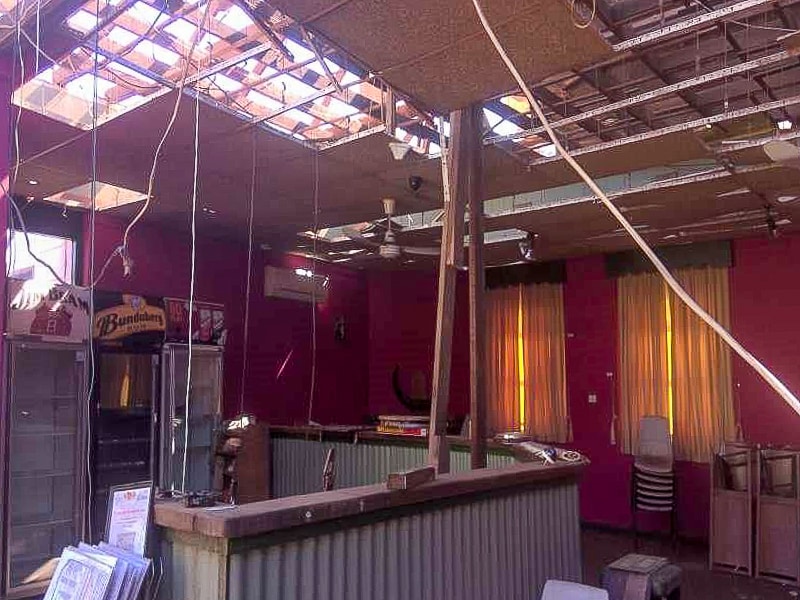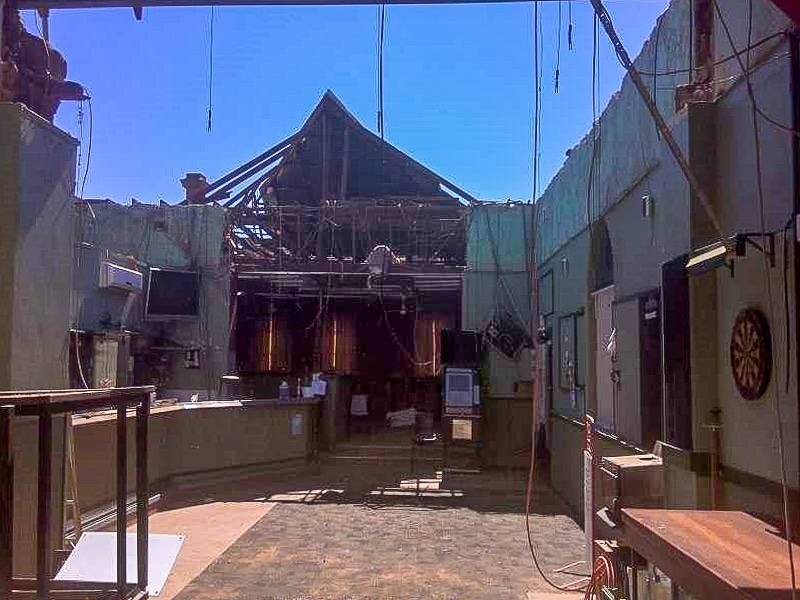Narrated by Tony Gorman, Director Valuations-Perth
“I love a sunburnt country, a land of sweeping plains, of rugged mountain ranges, of droughts and flooding rains, I love her far horizons, I love her jewel sea, her beauty and her terror-the wide brown land for me”.
As Dorothy McKellar wrote in her poem “My Country”, Australians are used to droughts, floods, fires and storms.
In some respects, I think Australians thrive on adversity, after all, it’s the fact that that we are prepared to stand shoulder to shoulder with strangers when we are broken, which makes this country strong and defines us as a people.
So this story is nothing new, it’s just another story about a storm, like many before it, and many more that will follow it. A common story of broken buildings, of dazed-confused people, who in the blink of an eye have watched their life’s work being stripped away.
But as you read this, I hope you start to understand that this story is not just another one about a storm, it’s about accepting that while we can never stop the storm, flood or fire, we can help broken people to recover if we understand how.
So, in truth, this story is about recovery after the storm, the flood or the fire…
The story is also about understanding the phrase “buildings can be replaced, but people can’t”, is only partly true as there are times when buildings can’t simply be replaced and people remain broken unless professionals understand how the layers of protection we have (insurance and alike) work, and the implications it has on people, if we fail in our duty to give proper advice, or if they fail to accept that advice.
On Sunday 11 April 2021, “Cyclone Seroja” (ironically Seroja means lotus in Indonesian), a Category 3 storm left a trail of damage on the West Australian mid-west region.
This storm had formed in the warm waters off Indonesia and East Timor and by the time it reached WA, it had already killed an estimated 229 people, destroyed more than 20,000 homes and five bridges in Indonesia’s East Nusa province and displaced around 9,000 people in East Timor.
If considered in isolation, a Cyclone crossing the coast of Western Australia is not an unusual event, after all, cyclones regularly impact the Western Australian coast between November and April.
However, what made Seroja unusual, was that it continued to travel south, staying off the coast, all the while gathering strength, before finally making landfall well south of the regions typically impacted by cyclonic activity.
The implications of the southward track are important to understand given that in WA locations further north, such as the Kimberley, Pilbara and Gascoyne regions (these are designated Cyclone prone areas), planning/development requirements stipulate that structures must be built to withstand cyclonic winds.
Not surprisingly, it costs a lot more to build in these areas, it costs a lot more to insure structures, and people who live in these areas typically understand the risk of not being adequately insured.
When Cyclone Seroja eventually crossed the coast just south of Kalbarri, it brought with it wind gusts of over 170 km/h and torrential rain (circa 167mm in some areas).
Kalbarri is a small, relatively isolated tourist town, with a permanent population of around 1,500 people, swelling to around 8,000 during tourist season.
Importantly, the town is not in a recognised cyclone prone area and buildings are not typically designed to stand wind forces generated by a storm of such intensity.
The impact on buildings was significant, with between 70%-80% of all properties damaged. Estimates suggest that between 20%-30% of these structures may be damaged beyond repair. By sheer luck, there was no loss of life.
As Seroja continued inland, it also impacted several even smaller communities, including the town of Northampton, one of Western Australia’s oldest towns.
Northampton was declared a townsite in 1864 and for reasons that will become important as this story continues, was classified as a “historic town” by the National Trust of Australia in 1993, in recognition of the significant heritage buildings which exist in the town.

One of these properties, known as the Railway Tavern, or “the bottom pub” first opened for business on 1 November 1876.
On its own, the vision of the shattered front bar of the old bottom pub was not the thing that convinced me to put down a few words about recovery and hope and how to ensure people who suffer loss can have that.
It was the impact of sitting on a milk crate, with my arm around a pretty tough bloke, watching his emotions shift from dark humor, to frustration, to despair and back again as I explained what I would be doing on-site. The courage of his wife, who wouldn’t let me leave without another cup of tea and cake when they had lost everything, has ultimately convinced me to pen a few words.
It also got me thinking that while bad things happen from time to time, and we can do bugger all about some of those things, it is hope that keeps us getting up in the morning and without that we have nothing.
So, at its core this story is not just about a storm, it’s not even really about loss, it’s actually about ensuring that as professionals, we give advice, that allows those who suffer loss to have hope.
The “bottom pub” is a circa 900 m² stone and iron-roofed heritage-listed building, boasting a front bar, saloon bar, dining area, games room, kitchen and accommodation all built around a central courtyard.
The size of the building, the method of construction, the heritage classification and the location of the bottom pub have all been emphasized, because if we fail to understand the implications of these matters, we may fail to give the proper advice, that gives broken people a glimmer of hope when they need it most.
The damage caused to the bottom pub by Seroja was significant.




The front verandah and roof structures were completely removed, structural damage to walls as roof structures were swept away, the roof over the front and lounge bar destroyed, all electrical wiring and services damaged, windows shattered, even door latches and hinges were bent by wind pressure.
Not to mention the circa 120mm rain, which destroyed the unprotected personal effects of two hard-working and determined Aussies.
In the interests of protecting the owners, it is not appropriate for me to go into specifics; however, if you have followed this story so far, I would be surprised if you have any doubt that the cost of repairing the bottom pub is high.
Seroja caused such widespread damage to the region in towns that lack services at the best of times. No power for well over a week, no internet, no mobile telephone services, no builders and nowhere to house workers even if they could be found.
So what about the levels of protection we put around us to help us to recover (those things supposed to give us hope).
Can’t they just rebuild? Didn’t they have insurance ?
The answer to the last question is yes, the owners did have insurance. The answer to the first question is I don’t know…
That will ultimately depend on the individual policy documents and the decisions of the insurance company.
It is not for me to speculate on these things, but I will say that the bad press insurance companies sometimes get is often not justified, the insurers are doing all they can to help, let’s hope that in the case highlighted above all is well, but insurance companies can only do so much.
Ultimately it is up to insurance brokers, assessors, loss adjusters, valuers and any other property professional who gets involved with these matters to make sure we not only give good advice, we understand the implications of bad advice, and we do all things possible to encourage owners to take our advice.
We will never stop the storm. However, if we understand the following points and the implications of getting it wrong, we may avoid having to sit on a milk crate with good people, who at that time couldn’t see much hope.
The key considerations are as follows:
1. In many small regional towns, it is common for the market value of properties to be relatively low, yet buildings can be large, and in some cases, constructed with heritage designs. The risk of underinsurance is very high in these areas.
Be clear that when dealing with large heritage-listed buildings, the reinstatement value for insurance purposes will almost certainly far exceed the market value of the property.
2. Where the insurable value is significantly higher than the market value, it is incumbent on us to ensure our reports explain why this is the case, so that the reader understands why this occurs, and the implications of ignoring the advice.
Misunderstanding the difference between market value, and insurance reinstatement cost, combined with “it will never happen to me”, are the key reasons that buildings and people remain broken and without hope when events like cyclones occur.
3. It is not as simple as rebuilding using modern, more affordable materials.
When there is significant partial damage in a large heritage-style building, there is an expectation that you will build to the same standard, using the same materials and methods.
This is likely to increase the insurance replacement cost significantly.
4. Insurance companies are easy targets and often receive bad press unjustifiably. It is my experience that they bend over backwards to help, but they can only do so much.
Ultimately, it is the responsibility of the professional to give the insured good advice, but it also falls back on the insured to decide whether they take that advice.
Where owners ignore advice or get bad advice, they must understand/accept the concept of “co-insurance”.
5. Co-insurance revolves around the expectation by insurance companies that owners will have buildings fully insured.
Where they are not fully insured (either as a result of bad advice or failing to take good advice), and there is significant partial damage, the concept of coinsurance may apply.
Coinsurance is the assumption that where you are underinsured, you share the responsibility for full insurance with the insurance company.
While many insurance policies allow leniency (often there will be an allowance of around 20% for under insurance), if you are underinsured by more, then the implications can be serious.
Put simply, coinsurance works like this-
As an example only (the reader must not assume this is relevant to the bottom pub), after allowing for a circa 20% variation, if a building should have been insured for $4,000,000, but was only insured for $1,000,000, many owners who incurred $1,000,000 damage to their buildings would suspect there was no need for concern.
The fact is that in these cases co-insurance may apply.
The insurance company (acting fairly in my view), having only been receiving annual premium payments based on $1,000,000, instead of $4,000,000, may only pay the insured 25% of the cost of the damage.
In the example highlighted above, if there was $1,000,000 damage, the insured may only receive $250,000.
This is not the fault of the insurance company.
It is my experience that insurance companies bend over backwards to avoid the bad press that occurs when these scenarios arise, but they can only do so much.
6. All professionals must understand “regional construction cost loadings”, recognising that in small towns, the cost and difficulties associated with mobilising a workforce, and sourcing materials can add significantly to the insurance replacement cost of buildings, be they heritage style or not.
7. Valuations for insurance purposes are more involved than simply highlighting the base cost of the building.
They must have regard to matters including but not necessarily limited to the costs associated with demolition, professional fees, costs associated with planning and preparation and escalations to name just a few of the considerations.
Insurance policies are not all the same and there may be other matters that need consideration relating to the loss of rent, and even business loss.
In closing, I hope that by thinking about insurance and the implications of getting it wrong, we can perhaps save one or two families from the pain of not only losing part of their building but also feeling that there is no hope.
Error: Unable to load Block variation: showperson